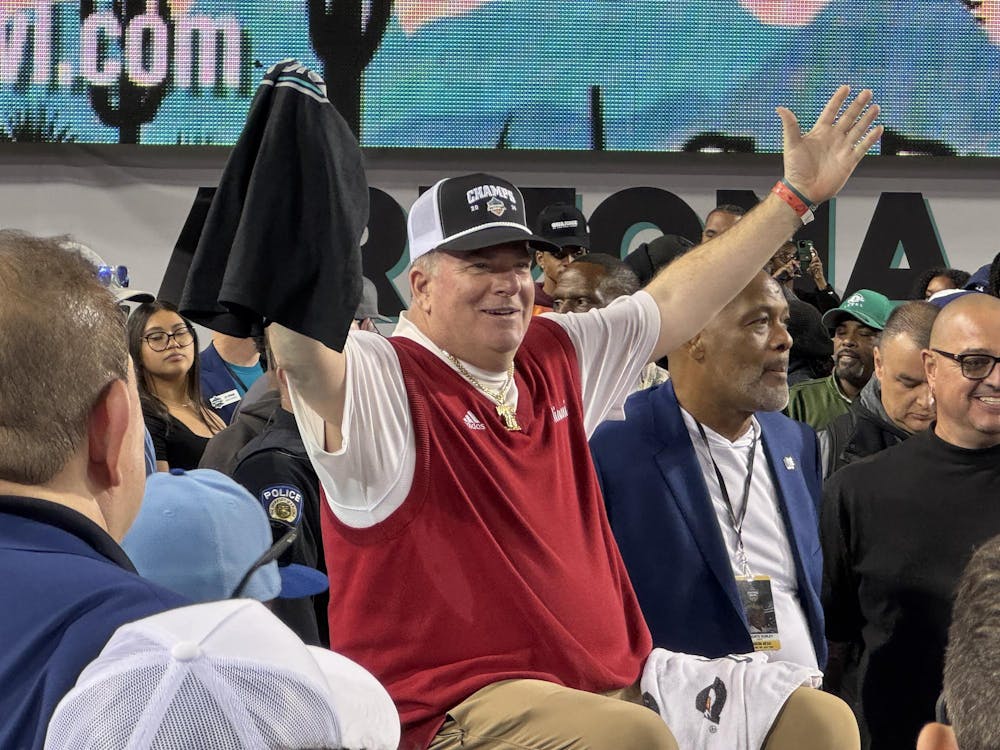After Miami University President Greg Crawford decided to move forward with the university’s phased-in return, students began filling up residence halls across campus.
Students had an assigned time slot to arrive on campus, where they were required to visit Millett Hall to be tested for COVID-19. Red wristbands were given to students after being tested, and any accompanying guests were screened to receive wristbands as well.
Leading up to the residence hall move-in, students were offered the opportunity to change their fall semester preference to remote or another delayed move-in.
Over 3,000 students chose not to return to residence halls, which allowed the Office of Residence Life space to move some of the 4,401 on-campus students to single rooms for social distancing purposes. Two hundred and thirteen students chose the other delayed move-in option, and will return in October.
Megan Sparks, a first-year finance major, was not only split from her roommate but was also moved to a different hall than the one she was expecting to live in a little more than a week before move-in.
Sparks said she called to see if the relocation decision was final after receiving the email notification, and the university confirmed she had been moved from McBride Hall to Withrow Hall.
“Initially, I was really sad about it,” Sparks said. “It [was] disappointing to hear that I got split up from my roommate.”
But Sparks said she understands the decision on Miami’s part because it limited the exposure she had to her roommate.
“I feel like [splitting roommates] is a good way to utilize all the extra space,” Sparks said.
Rob Abowitz, associate director of the office of residence life, said he thinks move-in went smoothly, describing the process as a marathon, not a sprint.
“I think it turned out as good as we could have asked,” Abowitz said. “It was really all about balancing between directly interacting with students and families and keeping everybody safe.”
Abowitz said he wouldn’t go back and change anything about the planning of the move-in process. He also noted that move-out in November will look similar to September’s move-in.
Enjoy what you're reading?
Signup for our newsletter
Now with residence halls being emptier than usual and tight safety restrictions on gatherings, hall communities are feeling the effects of stratified neighbors.
“What we gained in safety we also lost in community building,” Abowitz said, “and we’re going to have to make up for that.”
Sidra Capriolo, a sophomore Spanish and psychology double major, moved into Elliott Hall Sept. 14th, a dorm for the Scholar Leader program, but said despite the Living Learning Community purpose of the hall, there is not much community yet.
“There was kind of this expected community, and I really haven’t been getting any of that,” Capriolo said. “I know they’ve been trying really hard to get that to happen.”
Sparks said her hall has been persistent in trying to encourage the community to get to know one another.
“They really want us to focus on hanging out with people in our hall,” Sparks said. “I think it’s a really nice effort because a lot of people are having trouble meeting people this year.”
Twenty-four hours after students arrived on campus, their coronavirus test results started coming back.
Of the 3,601 students tested before move-in, 29 tested positive for COVID-19.
Abowitz said Miami didn’t approve the move-in COVID testing or acquire the materials for it until a week before move-in began on Sept. 14, but a testing committee quickly set up the entire drive-through testing site for the following week.
Capriolo arrived on campus the first day Miami was conducting move-in testing and said she waited around 40 minutes to get tested.
Sparks said the test was a lot less scary than she thought it would be, and it was easier because the tests were self-administered.
“It was different not knowing if people had [coronavirus] or not,” Sparks said about the first 24 hours after move-in. “It was a little bit nerve-wracking, but I wasn’t too nervous because I knew that if I [tested positive], I would be in my own space to make sure I didn’t spread it more.”
Sparks said she knew her move-in experience would be stressful despite concerns about the coronavirus because it’s her first-year moving away from home.
“It was exciting to set up my room, but I don’t know how typically it goes, which is where I feel like a lot of first-years are sad about,” Sparks said.
Capriolo noted that as a sophomore, move-in was easier this year with less crowds, but it was less exciting than last year.
“There definitely wasn’t that same excitement [this year] because a lot of people are remote,” Capriolo said. “It’s an entirely different ball game, and it just was not as exciting as moving in usually is.”




